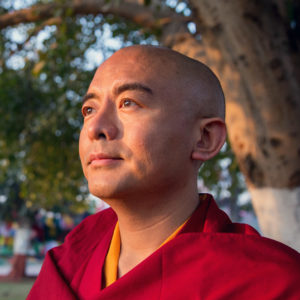April 22, 2021
In this episode, Wendy speaks with Tibetan Buddhist teacher Mingyur Rinpoche about how contemplative practice can lead us to awareness, compassion, and wisdom. Their conversation covers many topics, including:

- his involvement in early contemplative research;
- translating concepts between Buddhism and science;
- what Buddhists mean by “emptiness”;
- non-conceptual meditation, open presence and foundational awareness;
- the three kinds of self, and which one is like shaving foam;
- the problem of othering;
- making friends with panic and difficult emotions;
- the experience of a “wandering” retreat;
- and building trust through contemplative practice.
Born in Nepal in 1975, Mingyur Rinpoche began to study meditation as a young boy with his father Tulku Urgyen Rinpoche, himself a well-respected Buddhist teacher. He spent many years of his childhood in meditation retreat and also completed traditional Buddhist training in philosophy and psychology. In addition to extensive training in the meditative and philosophical traditions of Tibetan Buddhism, Mingyur Rinpoche has also had a lifelong interest in Western science and psychology, which has led to many fruitful collaborations with neuroscientists and psychologists.
Resources
Website: Tergar Meditation Community
See Rinpoche at Mind & Life’s free online Science and Wisdom of Emotions Summit (May 2-5, 2021)
- Book – the story of Rinpoche’s near-death experience on wandering retreat: In Love with the World: A Monk’s Journey Through the Bardos of Living and Dying
- Book – Joy of Living: Unlocking the Secret and Science of Happiness
- Paper on gamma synchrony in EEG recordings: Lutz et al (2004). Long-term meditators self-induce high-amplitude gamma synchrony during mental practice. PNAS
- Meditation Course from Mingyur Rinpoche
- Destructive Emotions:
- Original Mind & Life Dialogue (2000)
- Book by Dan Goleman – Destructive Emotions: A Scientific Dialogue with the Dalai Lama
